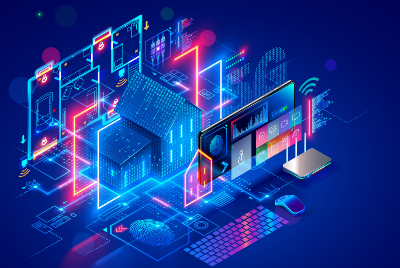
The integration of IoT (Internet of Things) and Big Data is revolutionizing the retail industry by significantly boosting performance across various aspects.
Here’s how these technologies are contributing: 1. Enhanced Customer Experience Personalization: IoT devices like smart beacons and sensors gather data on customer preferences, shopping behavior, and in-store movement.








This data, combined with Big Data analytics, helps retailers personalize marketing messages, offers, and product recommendations, leading to improved customer satisfaction and loyalty.
Smart Stores: IoT enables the creation of “smart stores” where connected devices streamline the shopping experience. For example, smart shelves can notify staff when stock is low, or even automatically reorder products, ensuring that customers always find what they need.
2. Optimized Inventory Management
Real-Time Tracking: IoT devices can track inventory in real-time, providing accurate data on stock levels, location, and movement. Big Data analytics can then predict demand patterns, helping retailers maintain optimal inventory levels, reduce stockouts, and minimize excess stock.
Automated Replenishment: By integrating IoT with Big Data, retailers can automate the replenishment process based on predictive analytics, ensuring that popular items are always available without overstocking.
3. Supply Chain Efficiency
Visibility and Transparency: IoT sensors can monitor the condition of goods in transit, track shipment progress, and provide real-time updates. This data, when analyzed, helps in optimizing routes, reducing delivery times, and minimizing losses due to damage or spoilage.
Predictive Maintenance: IoT-enabled devices in warehouses and distribution centers can predict when equipment is likely to fail, allowing for proactive maintenance. This reduces downtime and ensures that the supply chain runs smoothly.
4. Improved In-Store Operations
Employee Productivity: IoT devices can streamline tasks such as inventory checks, shelf stocking, and customer assistance, allowing employees to focus on more critical activities like customer service. Big Data can analyze these operations to further optimize workflows and staffing levels.
Energy Management: IoT sensors can monitor and control energy usage in stores, optimizing lighting, heating, and cooling systems based on real-time data. This not only reduces energy costs but also contributes to sustainability efforts.
5. Data-Driven Decision Making
Customer Insights: Big Data analytics provides deep insights into customer behavior, preferences, and trends. Retailers can use this information to make informed decisions on product offerings, store layouts, and marketing strategies.
Sales Forecasting: By analyzing data from IoT devices and other sources, retailers can accurately forecast sales trends, helping them to plan promotions, manage inventory, and set prices more effectively.
6. Enhanced Security
Loss Prevention: IoT-enabled cameras and sensors can detect suspicious activities in real-time, reducing theft and fraud. Big Data analytics can identify patterns that might indicate potential security threats, enabling retailers to take preventive measures.
Data Security: As retailers collect more data from IoT devices, ensuring the security of this data is crucial. Big Data analytics can help identify vulnerabilities and ensure that customer and operational data is protected against cyber threats.
7. Customer Engagement and Marketing
Targeted Advertising: IoT devices can capture data on how customers interact with products in-store. This data, combined with Big Data analytics, allows retailers to create highly targeted advertising campaigns, increasing the effectiveness of their marketing efforts.
Loyalty Programs: Retailers can leverage IoT and Big Data to enhance loyalty programs by offering personalized rewards and experiences based on customer data, improving customer retention.
Conclusion
The convergence of IoT and Big Data is empowering retailers to operate more efficiently, make smarter decisions, and deliver better customer experiences. As these technologies continue to evolve, their impact on the retail sector will only grow, leading to more innovative and successful retail strategies.

Leave a Reply